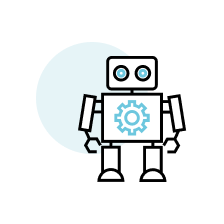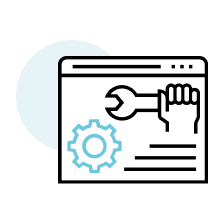RPA stands for Robotic Process Automation. Simply put, it involves automating repetitive and monotonous tasks through software scripts (the robots).
Without realizing it, a lot of time is wasted on repetitive activities. Often, these are administrative tasks that are necessary but time-consuming.
Everyone is familiar with situations where a colleague is doing the same tasks behind the computer day in and day out. Logging in, processing, and switching between different systems, mostly to transfer data from one system to another.
We have recently developed a solution for unnecessary administrative tasks, inventory discrepancies, and discussions. An app that takes care of the administration and optimally manages inventory: the MagazijnApp for VolkerWessels Telecom. Read more about the MagazijnApp here.


A robot is not only intelligent, but its productivity is also enormous. It is your digital assistant that is available 24/7 to help you. Convenient.

RPA takes over tasks. Some tasks do not always give you the challenge and energy you seek in your work. It’s great that this work can be delegated to the robot! That way, you can focus on activities that matter and bring you more challenge.

You instruct a robot in advance on exactly what it needs to do. It never deviates from that. Imagine if you had to copy a large amount of data from one application to another. A typo can easily occur. Whereas with a robot, this never happens.

In Robotic Process Automation, the costs are often easy to assess. Thanks to the relatively low costs and quick Return on Investment, the investment is interesting for any company. We aim to achieve an ROI of three to six months. Additionally, costs, benefits, and ROI are clearly mapped out.

Robots are built using reusable components. This allows them to be quickly combined into new robots. Many organizations build a library of robots and robot parts. This way, you can reuse components you already have and save time.

A robot operates based on rules determined by the process controller and does not deviate from them. These rules are executed rapidly and flawlessly by the robot. As a result, the robot remains consistent and maintains the quality.